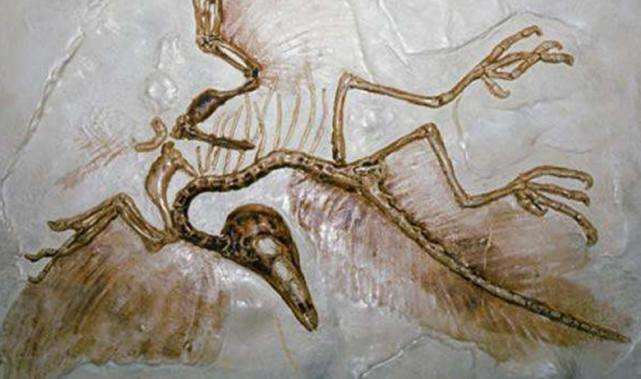Scientists discover 11th Archaeopteryx fossil, the oldest yet
Sat 27 Jan 2018, 20:21:34

Paleontologists have discovered an 11th Archaeopteryx fossil. The 150-million-year-old dinosaur bones are the oldest yet to be attributed to the transitionary genus.
The discovery -- detailed this week in the journal PeerJ -- could help scientists more easily differentiate between the group of bird-like dinosaurs and their closest relatives.
The fossil was found in ancient rock in the Altmühl River valley of Northern Bavaria. The strata from which the latest specimen was excavated represents the Late or Upper Jurassic epoch.
"Specimens of Archaeopteryx are now known from three distinct rock units, which together cover a period of approximately 1 million years," Oliver Rauhut, a professor and paleontologist at Ludwig-Maximilian University of Munich, said in a news release.
The Archaeopteryx genus describes a group of dinosaurs that bridged the evolutionary gap between feathered dinosaurs and modern birds. The newest discovery boats several unique features, further expanding the diversity of an already varied group.
"Among other things, they reveal that Archaeopteryx was very similar to advanced predatory dinosaurs in many respects," Rauhut said.
Differentiating between the transitionary genus and its closest relatives, non-avialan theropod dinosaurs and basal birds,
remains difficult. But scientists believe their analysis of the 11th Archaeopteryx specimen offers a more definitive way to identify members of the genus.
remains difficult. But scientists believe their analysis of the 11th Archaeopteryx specimen offers a more definitive way to identify members of the genus.
In taking stock of the attributes that define the Archaeopteryx genus, scientists realized the first-ever Archaeopteryx fossil, the Haarlem specimen, discovered in 1861, does not really belong to the group.
Though scientists may now have an easier team identifying Archaeopteryx members, the genus remains an unusually varied collection. Some scientists suggest the diversity is a result of intraspecific developmental polymorphism, variety within each species. Others suggest the varied nature of the group is a product of evolutionary experimentation.
"The high degree of variation in the teeth is particularly striking -- none of the specimens shows the same pattern of dentition as any other, which could reflect differences in diet," Rauhut said. "This is very reminiscent of the famous case of Darwin's finks on the Galapagos, which show remarkable variation in their beak shapes."
Some scientists believe these transitionary bird-like dinosaur species may have even evolved their unique attributes on a variety of islands.
"In that case, the Archaeopteryx fossils could represent a species flock, a Jurassic analog of Darwin's finches," Rauhut said.
No Comments For This Post, Be first to write a Comment.
Most viewed from Specials
Most viewed from World
AIMIM News
Latest Urdu News
Most Viewed
May 26, 2020
Do you think Canada-India relations will improve under New PM Mark Carney?
Latest Videos View All
Like Us
Home
About Us
Advertise With Us
All Polls
Epaper Archives
Privacy Policy
Contact Us
Download Etemaad App
© 2025 Etemaad Daily News, All Rights Reserved.





















.jpg)
.jpg)
.jpg)
.jpg)

















